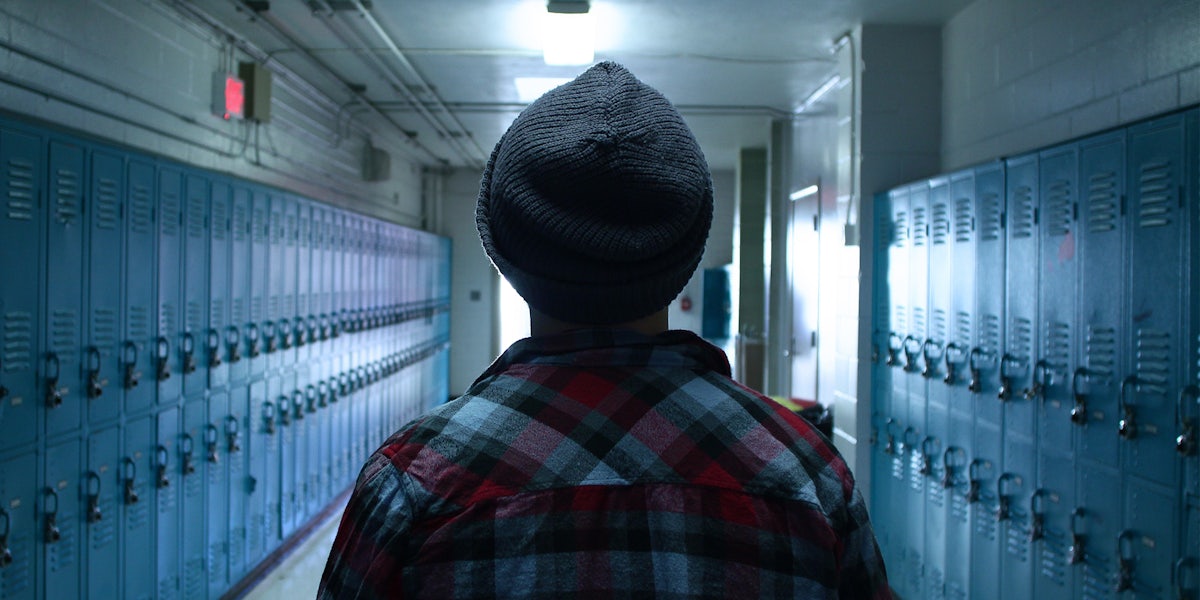Analysis
New York magazine’s vertical The Cut is being slammed over an article it published about alleged cancel culture in schools—one which frames teenage boys who commit sexual assault or abuse as the victims.
Described as “irresponsible,” “regressive,” and “disturbing” by commenters online, the article, titled “Canceled at 17,” lays out events at a school where a reckoning on sexual violence took place among the student body during the return to in-person schooling after the COVID-19 shutdown.
According to the article, an influx of complaints against fellow students began shortly after the return to in-person schooling, some of which referred to events that occurred years previously but which “no longer felt right after 18 months stuck at home.” After the alleged failure of the school to properly address multiple complaints of sexual abuse and violence, something the article’s author dismisses as an inherent failure of Title IX rather than the school administration, students organized a walkout in protest. On the same day, a list was found written on a wall in the girl’s bathroom, entitled “People to look out for” and naming several male students.
For some reason, the article chooses to focus on one of these boys, Diego, and the impact that being ostracized by his peers—over showing other people a naked photograph of his then-girlfriend Fiona without her consent—has had on him. While touching on some of the genuine problems that can and have arisen from situations like this—a boy was wrongly added to the list because he shared a first name with the actual abuser, a boy using this anti-sexual abuse movement as an excuse to stalk, control and abuse others—the author concentrates heavily on Diego, his emotional state, and just how unfair to him it is that other people don’t want to be friends with him after what he did.
Describing him as “enormously appealing but also very canceled” with eyes that are “dark, goofy, and sad,” it isn’t until the author has waxed lyrical about him and his suffering for almost a thousand words (902 to be exact) that we’re even told what he did to get canceled in the first place. With an emphasis on his then drunkenness, his hindsight recognition that he “really fucked up,” and a request from the author that we “consider setting aside judgment for a moment,” his “stupid mistake” is then revealed to be something that’s recognized as a sex crime in multiple jurisdictions.
Despite the seriousness of what Diego did to Fiona, and his own apparent failure to understand the gravity of it with statements like “I was like, ‘I don’t appreciate getting treated like an abuser,’ ” the article continues to focus on him, the consequences he’s facing and his emotional state. When Fiona comes into view at all, it’s either a factual recitation of things she said or did, without any speculation on her emotional state, or a gushing depiction of her beauty; something many readers found especially disturbing, both as treatment of a minor who’d suffered a sexual violation and in how it’s presentation seemed to justify or excuse her ex-boyfriend’s actions.
While there are genuine issues that could, and perhaps should, have been properly addressed by this article—such as the teens’ willingness to engage in social surveillance, the boys who genuinely were wrongly accused both at that school and another, the way racial dynamics come into play in situations like this, the longstanding culture of sexual assault and humiliation used as a bonding tool by teenage boys and the widespread tolerance for it—all it does is skirt around them while trying to use them as an excuse or an explanation as to why the “canceling” of Diego and boys like him is wrong. To many, the article just read as a string of excuses, and a plea that teen boys face no consequences when they sexually violate teen girls, with their youthful immaturity being held up as a reason for clemency but no similar mercy being shown to the teenagers who refuse to associate with them.
Women have responded to the article by sharing their own experiences of sexual assault in a school setting, and the whisper networks they set up to protect each other when, as all too often happens, their schools did nothing to stop it.
They are also pointing out that, historically, it’s the girls whose nudes are leaked and who are shunned, bullied, and abused by their classmates. And given the shocking frequency with which this happened, and still happens now, to teenage girls, where are all the glowing profiles humanizing them?
Others asked, outside of warning each other and avoiding potentially predatory boys’ company, what exactly are teenage girls allowed to do to protect themselves?
Journalist Ernest Owens, an expert in cancel culture and author of the upcoming The Case for Cancel Culture, put together a Twitter thread addressing the article.
In addition to defending the individual’s right to choose not to associate with someone, Owens lays out how doing so is not canceling someone; it’s self-protection.
He further weighs in to the layered privilege dynamics at play, and how those less privileged would never be granted this degree of leniency.
Speaking to the Daily Dot on the article’s insinuation that racism was a factor behind the accusations and “canceling” of the boys involved, Owens said, “It was a reckless conflation, used to weaponize the public’s understanding of racial injustice in order to gauge sympathy for Diego’s situation.”
“I think the piece is a perfect example of how misguided society is on cancel culture,” Owens added. “Rather than unpack the causes that led to the 17-year-old facing dismissal from peers, the feature story, unfortunately, veers into misplaced victim-blaming.”
The article wants us to understand that boys like Diego, who is going to college and has been to four proms despite his ostracisation, are the real victims here. But it seems that for the most part, online at least, that’s a hard sell that no one is buying.
